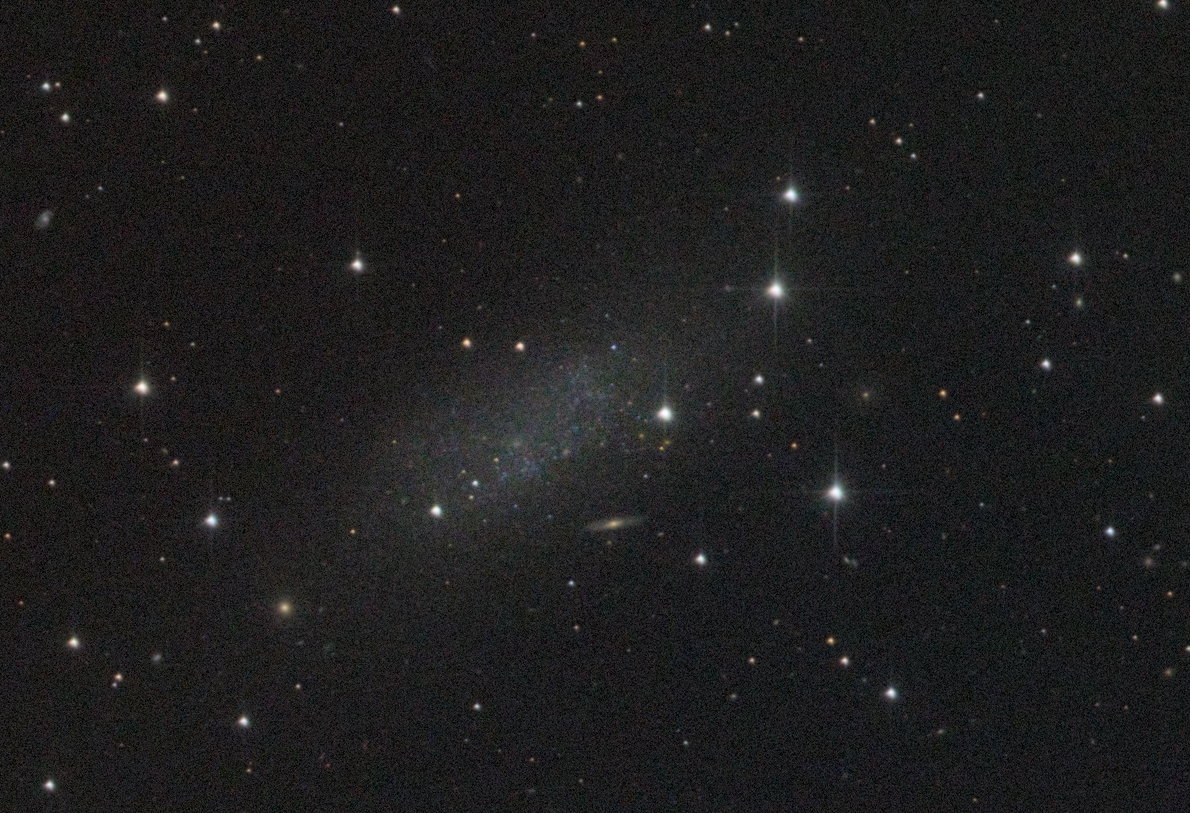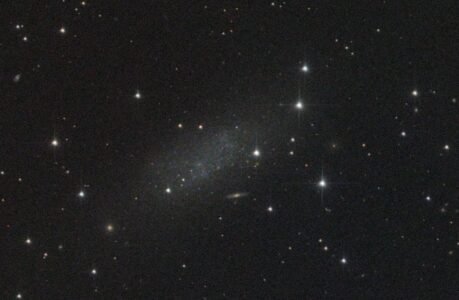For millennia, humans have looked up at the night sky and wondered about the stars that shine so brightly above us. The stars have inspired countless myths and legends, and one of the most fascinating constellations is Pegasus, the winged horse. In Greek mythology, Pegasus was a symbol of freedom and grace, and the constellation that bears his name is just as majestic. In this article, we’ll delve into the mysteries of Pegasus and explore the best ways to view it from Ireland.
The Constellation of Pegasus:
Pegasus is a large constellation located in the northern hemisphere. It is best viewed in the autumn months, when it can be seen in the eastern sky after sunset. The constellation is easily recognizable due to its distinctive shape, which resembles a large square with a diagonal line running through it. This line represents the horse’s neck and head, while the square represents his body.
One of the most interesting features of Pegasus is its connection to other constellations. The constellation of Andromeda, for example, is located just below Pegasus, and the two are often depicted together in mythological stories. Additionally, Pegasus is connected to the constellation of Perseus, who is said to have ridden the horse while slaying the monster Medusa.
Viewing Pegasus from Ireland:
If you’re interested in viewing Pegasus from Ireland, the best time to do so is in the autumn months, when the nights are longer and clearer. To find the constellation, look for a large square shape in the eastern sky after sunset. If you have trouble locating it, try using a star chart or a smartphone app that can help you identify constellations.
Once you’ve found Pegasus, take some time to explore its various features. One of the most interesting parts of the constellation is its “Great Square,” which is composed of four stars that are each about 2nd magnitude. These stars are named Alpheratz, Scheat, Markab, and Algenib, and they form the corners of the square. The line that runs through the square represents the horse’s neck and head, while the rest of the stars make up his body and wings.
Conclusion:
Pegasus is a beautiful and fascinating constellation that has captured the imaginations of people for thousands of years. Whether you’re a seasoned stargazer or just getting started, taking the time to explore Pegasus from Ireland can be a rewarding experience. With a little bit of patience and some clear skies, you too can gaze upon the majestic winged horse of the night sky.
How can I see the constellation of Pegasus from Ireland?
To see the constellation of Pegasus from Ireland, you need to wait for a clear night and go to a location with minimal light pollution. Here are the steps to follow:
- Check the weather: Before you head out, check the weather forecast for your location. Clear skies are essential for stargazing.
- Find a dark location: Pegasus is a relatively bright constellation, but you still need to find a dark location away from city lights. Look for a spot with minimal light pollution, such as a rural area, a park, or a beach.
- Look to the east: Pegasus rises in the east and is visible in the autumn months. The best time to view Pegasus is in October and November when it is highest in the sky.
- Look for the Great Square: The easiest way to spot Pegasus is to look for its Great Square. It is a large square-shaped pattern of stars, and it is one of the most recognizable parts of the constellation.
- Use a star chart or a smartphone app: If you’re having trouble finding Pegasus, use a star chart or a smartphone app to help you identify it. Star charts show the positions of the stars and constellations at a given time and location, while smartphone apps use your phone’s GPS to show you the night sky in real-time.
- Give your eyes time to adjust: Once you have found Pegasus, give your eyes time to adjust to the darkness. The longer you look at the sky, the more stars you will see.
Remember to dress warmly and bring a red flashlight or a piece of red cellophane to cover your flashlight. Red light does not affect your night vision, making it easier to see the stars. With a bit of patience and clear skies, you should be able to spot the majestic winged horse of the night sky from Ireland.
The mythology of the constellation of Pegasus
Pegasus is a constellation located in the northern sky that represents the winged horse of Greek mythology. According to legend, Pegasus was born from the blood of the slain monster Medusa. The hero Perseus, who had been sent to slay Medusa, used the head of the monster to turn the sea monster Cetus into stone. As Perseus flew away on Pegasus, the horse became a symbol of freedom and grace.
Pegasus was said to be the favorite mount of the gods, and he was often depicted carrying Zeus’s thunderbolts. He was also a loyal companion to heroes, such as Bellerophon, who tamed Pegasus with the help of the goddess Athena. With Pegasus, Bellerophon was able to defeat the fearsome Chimera, a creature with the body of a lion, the head of a goat, and the tail of a serpent.
In another story, Pegasus was said to have created a spring on Mount Helicon by striking his hoof against a rock. The spring was called Hippocrene and was said to be the source of inspiration for poets and artists.
The constellation of Pegasus is one of the oldest constellations known to man. It was first described by the Greek astronomer Ptolemy in the 2nd century AD, but it has been known to many cultures throughout history. In ancient Persia, Pegasus was associated with the god Mithras, while in Hindu mythology, the constellation was associated with the horse-headed god Hayagriva.
Today, Pegasus is still one of the most recognized constellations in the night sky. Its distinctive shape makes it easy to identify, and it remains a symbol of freedom, grace, and inspiration.
The Stars in the constellation of Pegasus
The constellation of Pegasus is a large and prominent constellation in the northern sky that is best seen in the autumn months. It contains several bright stars, including the four stars that make up the “Great Square” pattern, which is one of the most recognizable parts of the constellation.
Here are some of the stars that make up the constellation of Pegasus:
- Markab: Markab is the brightest star in Pegasus, with a magnitude of 2.49. It is a blue-white giant star that is located at the southwest corner of the Great Square.
- Algenib: Algenib is a blue-white star that is located at the southeast corner of the Great Square. It has a magnitude of 2.83.
- Scheat: Scheat is a red giant star that is located at the northwest corner of the Great Square. It has a magnitude of 2.42 and is one of the largest stars known.
- Alpheratz: Alpheratz is a binary star system that is located at the northeast corner of the Great Square. It has a magnitude of 2.07 and is also part of the constellation Andromeda.
- Enif: Enif is a yellow supergiant star that is located at the nose of Pegasus. It has a magnitude of 2.39 and is one of the largest stars visible to the naked eye.
In addition to these stars, Pegasus contains several other notable objects, including the globular cluster M15 and the spiral galaxy NGC 7331. M15 is one of the oldest and most densely packed globular clusters in the Milky Way, while NGC 7331 is a massive galaxy that is similar in size and shape to our own Milky Way.
Together, these stars and objects make Pegasus one of the most fascinating and beautiful constellations in the night sky.
Deep sky objects visible in the Constellation of Pegasus
The constellation of Pegasus is home to several deep sky objects that are visible with a telescope or binoculars. Here are some of the most notable deep sky objects in Pegasus:
- Messier 15 (M15): M15 is a globular cluster located about 33,000 light-years from Earth. It is one of the oldest and most densely packed globular clusters in the Milky Way. M15 is visible as a fuzzy patch in binoculars and a beautiful ball of stars in a telescope.
- NGC 7331: NGC 7331 is a large spiral galaxy located about 50 million light-years from Earth. It is similar in size and shape to our own Milky Way and is visible as a faint patch of light in a telescope.
- Stephan’s Quintet: Stephan’s Quintet is a group of five galaxies located about 300 million light-years from Earth. It is one of the most famous galaxy groups in the night sky and is visible as a small, faint group of galaxies in a telescope.
- NGC 7814: NGC 7814 is a beautiful edge-on spiral galaxy located about 40 million light-years from Earth. It is often referred to as the “Little Sombrero” because of its similarity to the more famous Sombrero Galaxy (M104) in the constellation of Virgo.
- M2: M2 is a globular cluster located about 37,000 light-years from Earth. It is one of the largest and brightest globular clusters in the Milky Way and is visible as a fuzzy patch in binoculars and a beautiful ball of stars in a telescope.
These deep sky objects make Pegasus a popular target for amateur astronomers and astrophotographers. With a telescope or binoculars, you can explore the wonders of the cosmos and appreciate the beauty of the night sky.

